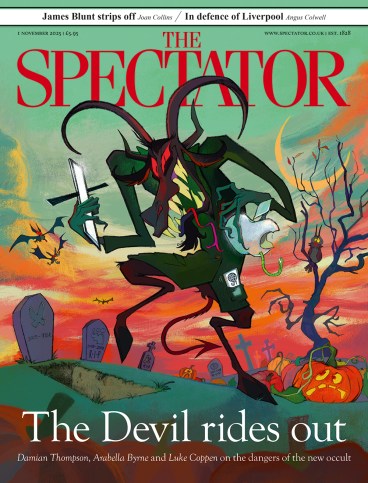
In a radio discussion of the Renters’ Rights Act which passed into law this week, I heard ‘Britain’s housing emergency’ referred to as a given fact. If that’s so, then the housebuilders who create supply and feed home-owning aspirations ought to be public, political and stock-market heroes. But they’re not – and it’s worth asking why such an essential sector has fallen so far out of favour.
Think back to Sir Lawrie Barratt, who built 300,000 houses and achieved fame with 1980s television ads featuring a strong-jawed actor as Barratt himself arriving by helicopter to inspect the latest show house. Less well known was Duncan Davidson, the swashbuckling grandson of a duke who died last month: he founded Persimmon in 1972, peppered the country with its new estates and took it into the FTSE 100 in 2005.
Demand for new homes has never waned. But since those days the industry has hit every kind of trouble, from accusations of profiteering in George Osborne’s Help to Buy scheme to post-Brexit shortages of bricklayers, post-Covid shortages of timber, ever more onerous green planning rules and plunges in their own share prices. Meanwhile, would-be buyers’ finances are so hard-pressed that new-build sales have fallen to levels not seen since the 2008 financial crisis, less than half of long-term norms. As I’ve said before, Labour’s 1.5 million target for new homes in this parliament is vanishing – and ministers will be sure to blame the industry. No bold Barratt or Davidson today would want to be a housebuilder.
Ballroom guests
Here’s another housebuilding question: does Donald Trump’s new White House ballroom meet the definition of fascist architecture? One scholarly essay describes that style as ‘the sublimity of imperial power… forcefully portrayed’ in buildings that are ‘privileged backdrops for… oratorical theatrics’. Trumpists and their opponents might agree this perfectly captures the purpose of the $300 million monster, almost twice the size of the historic presidential mansion itself, which will rise on the site of the East Wing that was smashed to rubble last week. But even more provocative is the gallery of business and private donors currying presidential favour by paying for it.
Here are the giants of tech from Amazon to Palantir, with Google (as parent of YouTube) contributing $22 million in part-settlement of a suit brought by Trump in 2021 over the suspension of his YouTube account following the 6 January assault on the Capitol. From the casino industry, the Adelson family of Las Vegas; from tobacco, Altria (formerly Philip Morris), owner of the Marlboro cigarette brand; from sport, the Glazer siblings who own most of Manchester United.
And from the crypto circus, the bitcoin-billionaire Winklevoss twins, who have supported Trump’s push for looser regulation in the sector. But missing is Changpeng Zhao, founder of the Binance exchange, which has links to the Trump family’s own lucrative crypto activity. If Zhao’s recent presidential pardon, for convictions relating to the use of Binance for money-laundering, came too late for him to appear in the donor list, he can still attend the ballroom’s gala opening before Trump leaves office in January 2029.
What a tableau of American grotesques that promises to be – completed perhaps (fans of Steven Seagal’s 1992 blockbuster Under Siege will recognise the image) by a Playboy Playmate bursting out of a giant stars-and-stripes cake.
Time to move on
Tom Hayes is back. The City trader who served five and a half years in jail for his alleged part in the Libor rate-rigging scandal, but whose convictions were overturned by the Supreme Court in July, is suing UBS, one of his former employers, for $400 million. He has always claimed his actions in pushing for interest-rate settings that favoured his trading book reflected common practice and internal policy. Many other practitioners felt his original sentence, of 14 years reduced to 11, was extraordinarily harsh. His claim for damages in a US court says the Swiss bank delivered him to the justice system ‘on a silver platter’ as ‘a hand-picked scapegoat’.
There are other nuances to a case in which the Supreme Court said there might have been ‘ample grounds’ to convict if the judge in Hayes’s 2015 trial had not misdirected the jury. But one way or another, this decade-long saga made the British legal system look as clumsy in its handling of complex financial evidence as it made the money market look casually prone to what outsiders might see as malpractice. If those lessons have been learned, better that UBS should settle so that Hayes can finally move on.
Last flight out
This is hardly a last-chopper-out-of-Saigon item, but this week’s last Ryanair flight from Stansted to Bergerac in south-west France certainly bodes badly for an already battered local economy – and offers a symbol of wider change. Small businesses will suffer, property prices will fall and the airport itself (one of several shunned by Ryanair in a dispute with the French government over passenger taxes) may close if flights aren’t reinstated next spring. Here for a short, wet autumn visit, I faced tiresome new biometric checks on arrival and a full-price flight via distant Toulouse to get home.
The brief era of ultra-cheap, low-hassle international air travel was a blessing while it lasted: travellers’ horizons expanded as host destinations profited. It hasn’t ended because we collectively opted to spare the planet aircraft emissions to compensate for poisoning it in so many other ways, but because it’s been overtaken by border-control panic, protectionism and xenophobic anti-tourism.
But, as always, I search for better news – and the best during this trip came from my farmer neighbour. Our shared walnut harvest has this year yielded ten times last October’s blighted crop. Stand by, in the gathering gloom, for a glut of gâteaux de noix.








Comments